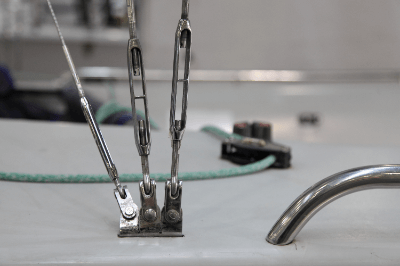What Is a Turnbuckle?

A turnbuckle is a device used to adjust the tension of ropes or wires. It comprises three main parts: the central body and two end screws with right-hand and left-hand threads.
When the center part is rotated, the distance between the two end screws either decreases or increases, allowing for precise adjustment of tension when a rope or wire is connected to these screws.
Uses of Turnbuckles
Turnbuckles are commonly used in earthquake-resistant construction for buildings, where steel rods are braced to reinforce the structure. They are also integral to the construction of large bridges, suspension bridges, and road bridges, providing essential tension adjustment capabilities.
Principle of Turnbuckles
The principle of turnbuckles lies in their unique three-part design. The body of the turnbuckle is threaded on both ends, with one end featuring a right-hand thread and the other a left-hand thread. By rotating the body, the distance between the two screws can be adjusted, allowing for the alteration of the overall length of the turnbuckle. This adjustment mechanism enables the user to control the tension of connected ropes or wires effectively.
Turnbuckles are typically made from materials like SS steel and SNR steel, which are chosen for their strength and durability, particularly in applications like earthquake-resistant braces in building materials.